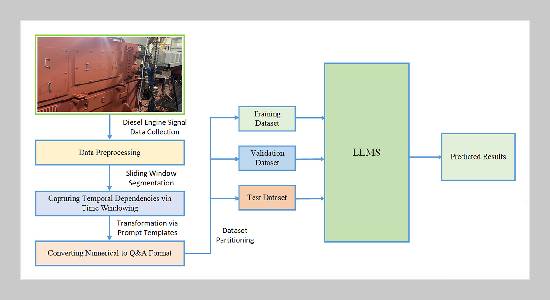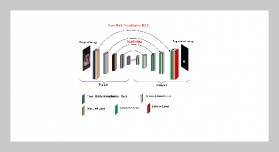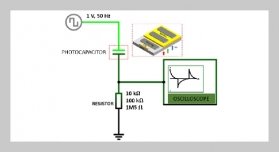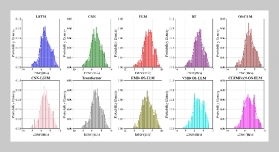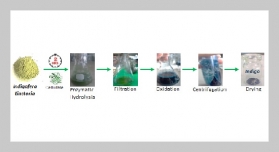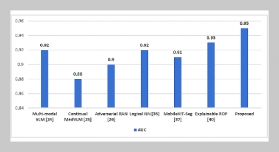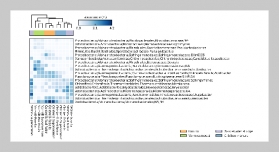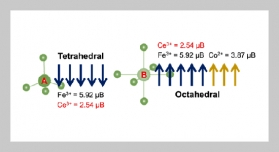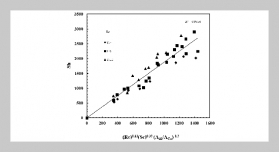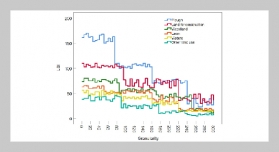Yunzhou Zhang1, Yanghui Tan1This email address is being protected from spambots. You need JavaScript enabled to view it., Shuai Hao1,2, Hong Zeng3, Peisheng Sang1, and Ya Gao1
1Maritime College, Tianjin University of Technology, 300384, Tianjin, China
2State Key Laboratory of Hydraulic Engineering Intelligent Construction and Operation, Tianjin University, Tianjin 300072, China
3Marine Engineering College, Dalian Maritime University, 116026, Dalian, China
- [1] S. Bullock,J. Mason,andA.Larkin,(2021)“Theurgent case for stronger climate targets for international ship ping" Climate Policy 22(3): 301–309. DOI: 10.1080/14693062.2021.1991876.
- [2] J. Ang, C. Goh, A. Saldivar, and Y. Li, (2017) “Energy Efficient Through-Life Smart Design, Manufacturing and Operation of Ships in an Industry 4.0 Environment" Energies 10(5): 610. DOI: 10.3390/en10050610.
- [3] M. Cheliotis, I. Lazakis, and G. Theotokatos, (2020) “Machine learning and data-driven fault detection for ship systems operations" Ocean Engineering 216: 107968. DOI: 10.1016/j.oceaneng.2020.107968.
- [4] H. Sohn and C. R. Farrar, (2001) “Damage diagnosis using time series analysis of vibration signals" Smart Materials and Structures 10(3): 446–451. DOI: 10. 1088/0964-1726/10/3/304.
- [5] A. Zabihihesari, S. Ansari-Rad, F. A. Shirazi, and M. Ayati, (2020) “Classification-Based Fuel Injection Fault Detection of a Trainset Diesel Engine Using Vibration Signature Analysis" Journal of Dynamic Systems, Measurement, and Control 142(5):051002. DOI: 10.1115/1.4046270.
- [6] S. Han, N. Mannan, D. C. Stein, K. R. Pattipati, and G. M. Bollas, (2021) “Classification and regression models of audio and vibration signals for machine state monitoring in precision machining systems" Journal of Manufacturing Systems 61: 45–53. DOI: 10.1016/j.jmsy.2021.08.004.
- [7] Y. Guo, J. Zhang, B. Sun, and Y. Wang, (2024) “A universal fault diagnosis framework for marine machinery based on domain adaptation" Ocean Engineering 302: 117729. DOI: 10.1016/j.oceaneng.2024.117729.
- [8] Y. Yu, X. Si, C. Hu, and J. Zhang, (2019) “A Review of Recurrent Neural Networks: LSTM Cells and Network Architectures" Neural Computation 31(7): 1235–1270. DOI: 10.1162/neco_a_01199.
- [9] J.LiuandX.Yang,(2018)“LearningtoSeetheVibration: A Neural Network for Vibration Frequency Prediction" Sensors 18(8): 2530. DOI: 10.3390/s18082530.
- [10] H. Tian, D. Ren, K. Li, and Z. Zhao, (2020) “An adaptive update model based on improved Long Short Term Memory for online prediction of vibration signal" Journal of Intelligent Manufacturing 32(1): 37–49. DOI: 10.1007/s10845-020-01556-3.
- [11] Y. Zhang, R. Lin, H. Zhang, and Y. Peng, (2022) “Vibration prediction and analysis of strip rolling mill based on XG Boost and Bayesian optimization" Complex & Intelligent Systems 9(1): 133–145. DOI: 10.1007/s40747-022-00795-6.
- [12] J.-G. Jang, C.-M. Noh, S.-S. Kim, S.-C. Shin, S.-S. Lee, and J.-C. Lee, (2023) “Vibration data feature extraction and deep learning-based preprocessing method for highly accurate motor fault diagnosis" Journal of Computational Design and Engineering 10(1): 204–220. DOI: 10.1093/jcde/qwac128.
- [13] H. Xue and F. D. Salim, (2023) “Prompt Cast: A New Prompt-Based Learning Paradigm for Time Series Fore casting" IEEE Transactions on Knowledge and Data Engineering: 1–14. DOI: 10.1109/tkde.2023.3342137.
- [14] C. Liu, S. Yang, Q. Xu, Z. Li, C. Long, Z. Li, and R. Zhao. “Spatial-Temporal Large Language Model for Traffic Prediction”. In: Proceedings of the 25th IEEE International Conference on Mobile Data Management (MDM). Brisbane, Australia: IEEE, 2024, 25–34. DOI: 10.1109/MDM61037.2024.00025.
- [15] D. Cao, F. Jia, S. Ö. Arik, T. Pfister, Y. Zheng, W. Ye, and Y. Liu. “TEMPO: Prompt-based Generative Pre trained Transformer for Time Series Forecasting”. In: Proceedings of the Twelfth International Conference on Learning Representations (ICLR). Vienna, Austria, 2024.
- [16] A. Vaswani, N. Shazeer, N. Parmar, J. Uszkoreit, L. Jones, A. N. Gomez, Ł. Kaiser, and I. Polosukhin. “Attention is All You Need”. In: Advances in Neu ral Information Processing Systems (NeurIPS). Ed. by I. Guyon, U. von Luxburg, S. Bengio, H. Wallach, R. Fergus, S. Vishwanathan, and R. Garnett. 30. 2017, 5998–6008.
- [17] J. Ni, G. H. Abrego, N. Constant, J. Ma, K. Hall, D. Cer, and Y. Yang. “Sentence-T5: Scalable Sentence Encoders from Pre-trained Text-to-Text Models”. In: Findings of the Association for Computational Linguistics: ACL2022. Dublin, Ireland: Association for Computational Linguistics, 2022, 1899–1910. DOI: 10.18653/v1/2022.findings-acl.146.
- [18] M. Lewis, Y. Liu, N. Goyal, M. Ghazvininejad, A. Mohamed, O. Levy, V. Stoyanov, and L. Zettle moyer. “BART: Denoising Sequence-to-Sequence Pre training for Natural Language Generation, Transla tion, and Comprehension”. In: Proceedings of the 58th Annual Meeting of the Association for Computational Linguistics. Online: Association for Computational Linguistics, 2020, 7871–7880. DOI: 10.18653/v1/2020.acl main.703.
- [19] K. G. Dan Hendrycks, (2016) “Gaussian Error Linear Units (GELUs)" arXiv preprint arXiv:1606.08415: DOI: 10.48550/arXiv.1606.08415.
- [20] J. Devlin, M.-W. Chang, K. Lee, and K. Toutanova. “BERT: Pre-training of Deep Bidirectional Transformers for Language Understanding”. In: Proceedings of the 2019 Conference of the North American Chapter of the Association for Computational Linguistics: Human Language Technologies, Volume 1 (Long and Short Papers). Minneapolis, Minnesota: Association for Computational Linguistics, 2019, 4171–4186. DOI: 10.18653/ v1/N19-1423.
- [21] H. H. Afshari, S. A. Gadsden, and S. Habibi, (2017) “Gaussian filters for parameter and state estimation: A general review of theory and recent trends" Signal Processing 135: 218–238. DOI: 10.1016/j.sigpro.2017.01.001.
